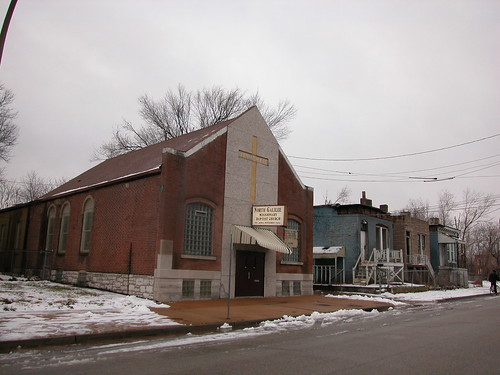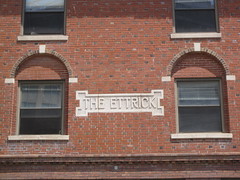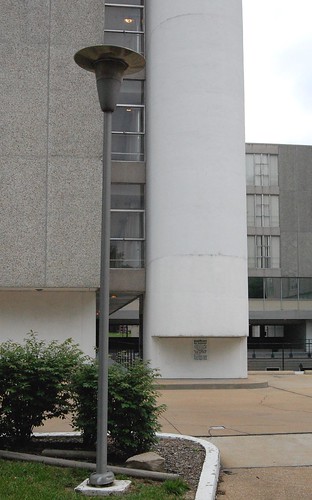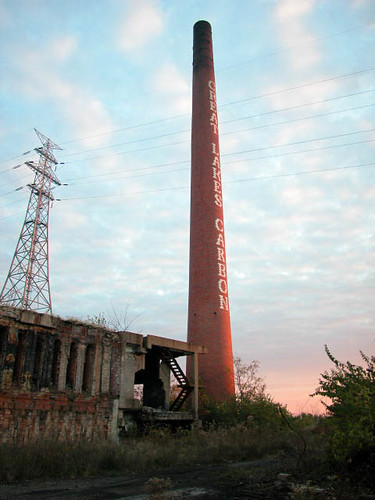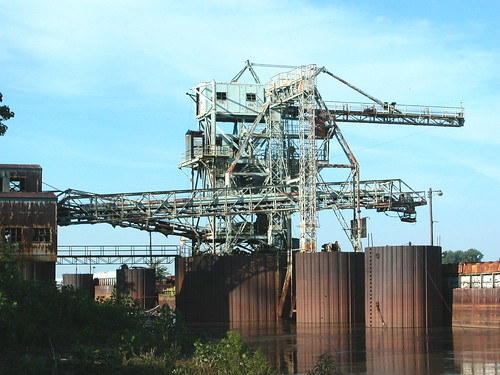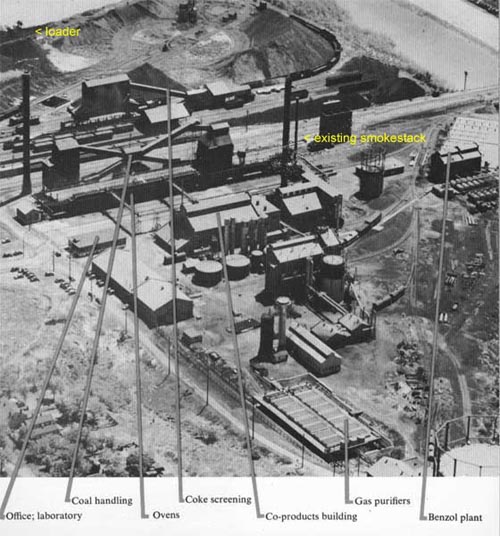by Michael R. Allen
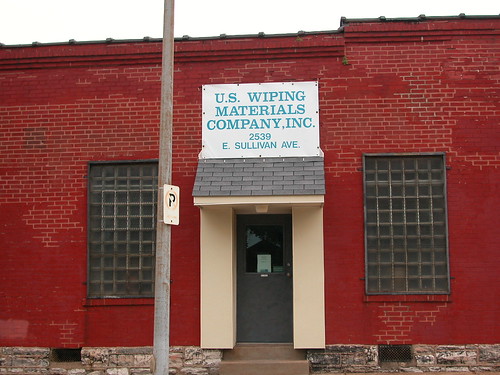 The website of St. Louis’ own U.S. Wiping Materials Company, Inc. boasts that the company “has been in business for over 100 years. Being centrally located in St. Louis Missouri has allowed us the ability to provide cost-effective shipping in a timely manner to all of North America.”
The website of St. Louis’ own U.S. Wiping Materials Company, Inc. boasts that the company “has been in business for over 100 years. Being centrally located in St. Louis Missouri has allowed us the ability to provide cost-effective shipping in a timely manner to all of North America.”
The central location for U.S. Wiping Material, manufacturer and distributor of towels, rags and wipers of all kinds, is a one-story brick industrial building at 2539 East Sullivan Avenue in St. Louis Place. Built in 1914, the building is a sturdy home to the company.
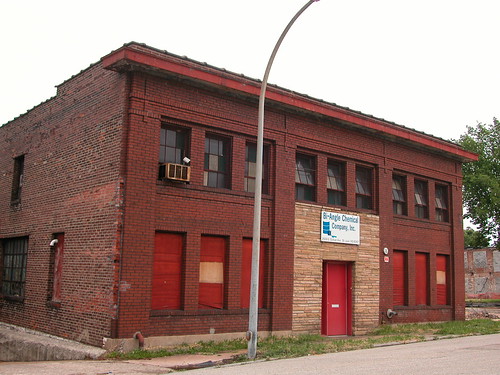 Next door to U.S. Wiping is the Bi-Angle Chemical Company, Inc. at 2531 East Sullivan Avenue. This plastics company is located in a handsome two-story Craftsman-style building built in 1916. The workforce is not huge, but workers can be seen all day on the back docks taking their breaks.
Next door to U.S. Wiping is the Bi-Angle Chemical Company, Inc. at 2531 East Sullivan Avenue. This plastics company is located in a handsome two-story Craftsman-style building built in 1916. The workforce is not huge, but workers can be seen all day on the back docks taking their breaks.
U.S. Wiping and Bi-Angle are located on a fairly deserted block between extra-wide Parnell Avenue and 25th Street, where Sullivan dead-ends at the Sullivan Place apartment complex. These companies’ building are located within the proposed boundaries of McEagle’s NorthSide project. While just outside of the boundary of one of the developer’s proposed “employment centers,” these employers may not be safe. A slide shown by McEagle on May 21, 2009 at Central Baptist Church shows these two building demolished. At the same meeting, McEagle chief Paul J. McKee, Jr. promised that McEagle would not move “a single job” out of the project area.
Of course, these companies might voluntarily sell to McEagle — but that would mean the loss of jobs in the heart of St. Louis Place, a move the developer says it wants to avoid. U.S. Wiping and Bi-Angle provide jobs, pay earnings and real estate taxes and hold down the fort on a lonely block. These companies and their buildings should be retained as part of the new development, not courted for departure.
 To the south, Hopmann Cornice Company faces destruction for the NorthSide project (see “What Happens to Hopmann Cornice?”, June 3, 2009). Located on Benton Avenue between Parnell and Jefferson, Hopmann is located in a southern tail of the proposed “employmenmt center” and Benton Street is proposed for removal. While Hopmann employs a very small number of employees — as few as two at times — this is a family-owned business providing a highly specialized craft. The Hopmanns have survived in St. Louis Place since 1880, and their eviction would be a tragic end to a proud family legacy.
To the south, Hopmann Cornice Company faces destruction for the NorthSide project (see “What Happens to Hopmann Cornice?”, June 3, 2009). Located on Benton Avenue between Parnell and Jefferson, Hopmann is located in a southern tail of the proposed “employmenmt center” and Benton Street is proposed for removal. While Hopmann employs a very small number of employees — as few as two at times — this is a family-owned business providing a highly specialized craft. The Hopmanns have survived in St. Louis Place since 1880, and their eviction would be a tragic end to a proud family legacy.
As a family-owned business, McEagle ought to be sympathetic to Hopmann Cornice and work around its small-footprint shop. After all, if the goal of NorthSide is to provide multi-acre business sites, how would retention of a 0.17-acre site impede any of the project goals? (The U.S. Wiping and Bi-Angle sites are 0.496 acres and 0.16 acres, respectively.)
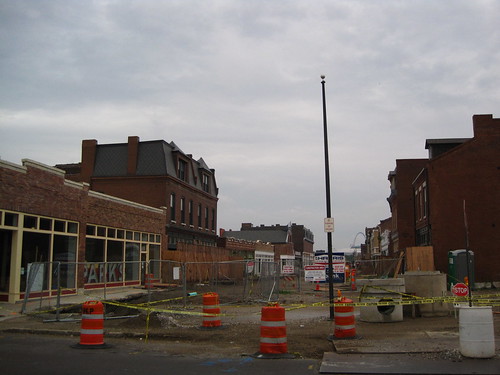 The mall is dead! Crews finally have removed all of the raised pedestrian mall on 14th Street in Old North. Work is underway on reconstructing the streets and sidewalks that will connect the neighborhood to the rehabbed buildings in the two-block stretch between St. Louis and Warren avenues.
The mall is dead! Crews finally have removed all of the raised pedestrian mall on 14th Street in Old North. Work is underway on reconstructing the streets and sidewalks that will connect the neighborhood to the rehabbed buildings in the two-block stretch between St. Louis and Warren avenues. One block north of the former mall, the Urban Studio Cafe opened last week at 2815 N. 14th Street next door to Crown Candy Kitchen. The cafe offers coffee, pastries and (starting tomorrow) lunch items.
One block north of the former mall, the Urban Studio Cafe opened last week at 2815 N. 14th Street next door to Crown Candy Kitchen. The cafe offers coffee, pastries and (starting tomorrow) lunch items.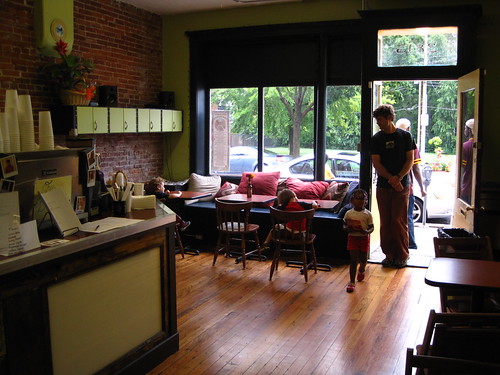 The Urban Studio Cafe is open from 8 a.m. until 2 p.m. daily. What a huge difference it makes for Old North to have a spot for residents to gather and hang out away from home! This is the type of “commercial development” that the north side needs most — development that builds up the social capital of neighborhoods.
The Urban Studio Cafe is open from 8 a.m. until 2 p.m. daily. What a huge difference it makes for Old North to have a spot for residents to gather and hang out away from home! This is the type of “commercial development” that the north side needs most — development that builds up the social capital of neighborhoods.
